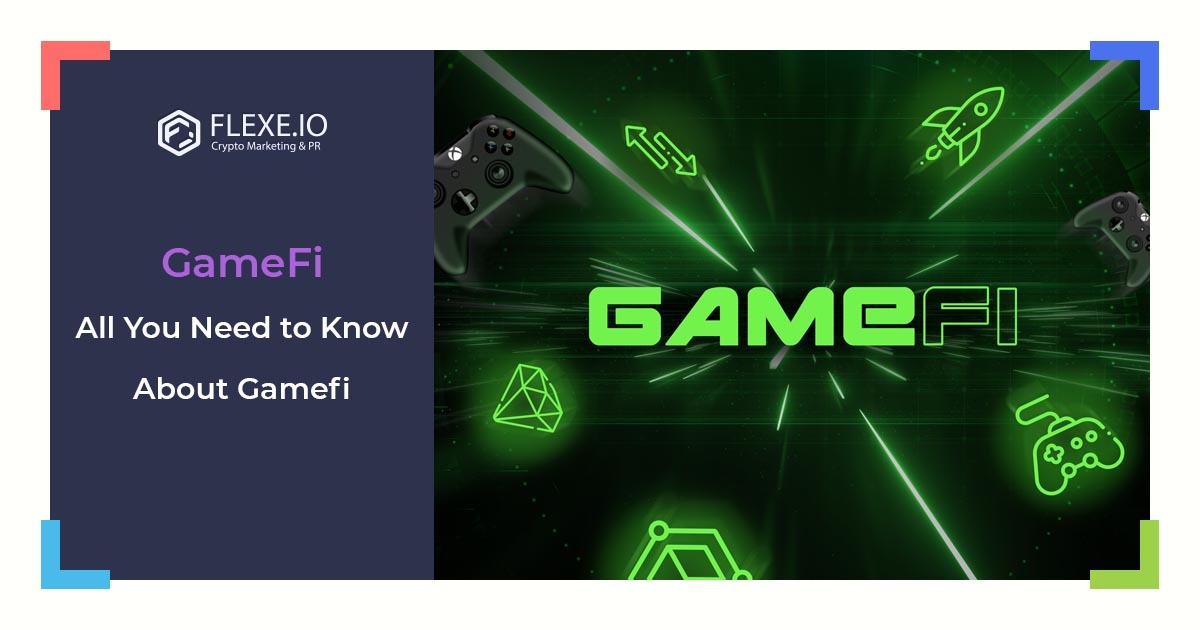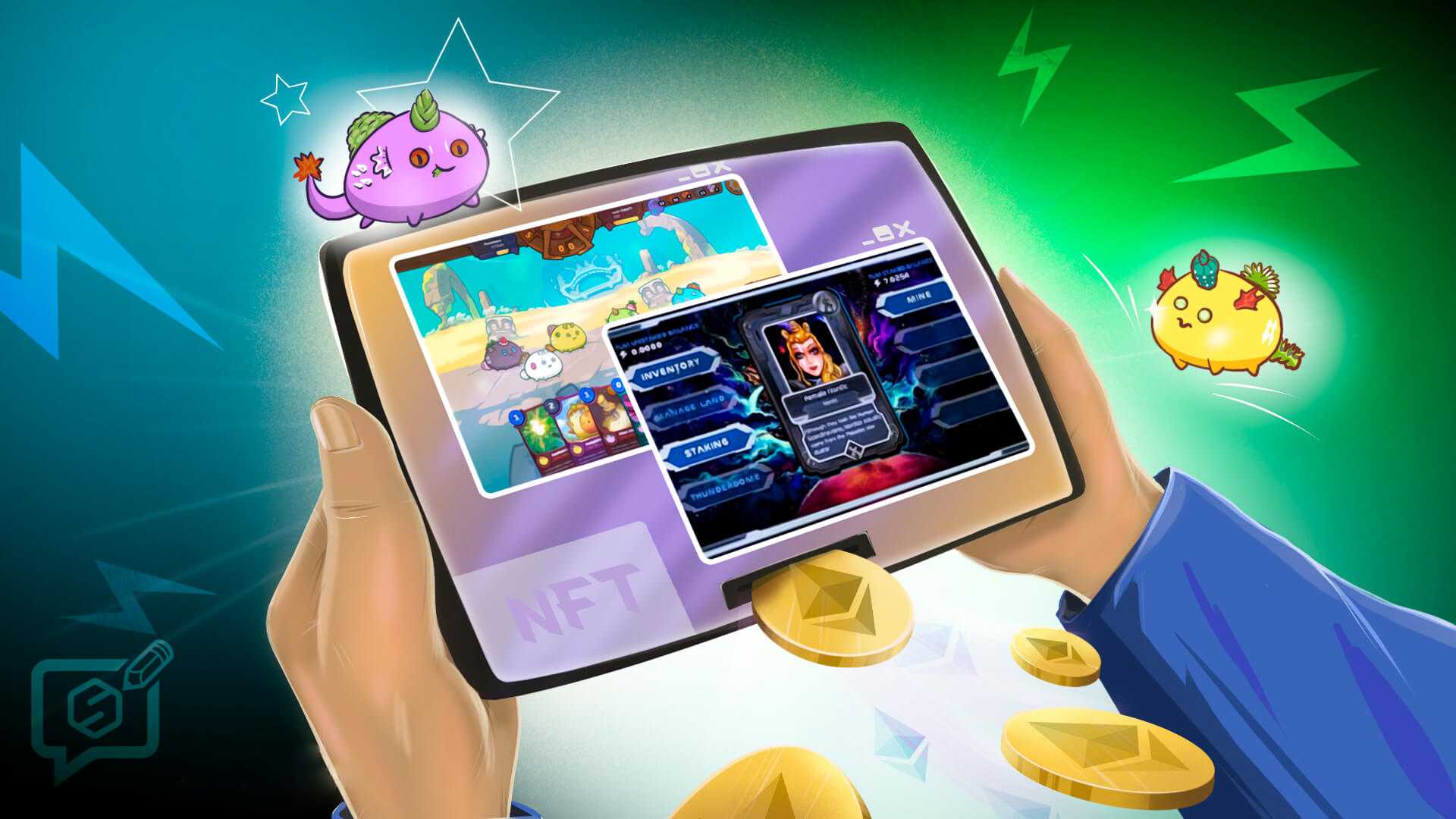What You Need to Know about GameFi

Gaming has always been one of the most entertaining forms of pastime for people everywhere around the world. Since time immemorial, people have been devising new and more exciting and challenging games to develop a variety of skills for both children and adults. Anything from cognitive and motor skills to emotional wellbeing can be developed and enhanced through gaming as the human body interacts with the game’s playing field and elements, giving the mind stimuli that are translated into thought aimed at winning and obtaining satisfaction in the process.
Over time, games developed from boards and pieces to more elaborate forms with the advent of new technologies. The development of the computer was instantly perceived as a new platform for gaming in the early 1970s, giving impetus to the development of a multibillion dollar industry that thrives today. Modern video games are more than just entertainment – they are an inseparable and key part of pop culture – a gigantic layer of content that drives inspiration and slithers into everyday speech and life through iconic phrases, clothing, images and much more.
Unlike level design, the development of video games has not been linear, as new genres are emerging to cater to the growing demands of users. What started as linear levels for shooters with primitive graphics has quickly evolved into strategy games, adventure games with incorporated film cutscenes, flight sims, science fiction premises, role playing games, and ultimately – the massively multiplayer online scenario. The connection of the internet to video games brought about a revolution as players were no longer confined to contestation with a predictable in-game AI, but were capable of competing online with other players from around the world with varying levels of skill and competence.
Countless massively multiplayer online games have become staples of the genre, including the cult World of Warcraft, Lineage, Dota, Counter Strike Global Offensive, and many others. The offline gaming sector did not stay behind in terms of popularity, producing masterpieces that have merged with pop culture and turned into benchmarks in game development. Such releases are Witcher 3 Wild Hunt, Mass Effect, Halo and others are considered to be the epitome of game design and accomplishment, raking in millions in revenues for their producing studios and offering endless entertainment and emotions for the players.
However varied and exciting the gaming pantheon may be, the underlying flaw that has always been traced through virtually all games is the core concept they abide by in their mechanism. Players have to play to win, outlining the Play-to-Win scenario. This mechanism was applicable when studios earned solely on the sales of game copies with content that could not be altered or augmented in any way – every game was a one-off release. But it was not long after the release of the first games that developers realized they could earn more by introducing innovation and continuity into games, thus monetizing on added content. This brought about the development of the Pay-to-Win model, under which players had to pay for in-game items, or premium currencies, to gain access to better equipment, or even additional content like new areas, levels, characters and much more.
But the Pay-to-Win model has also become outdated as players have started expressing dissatisfaction with its excessive application across virtually all new games released across both console and PC platforms. With content becoming almost exclusively paid and the core game being less than satisfactory without additional paid content, players have started seeking alternatives to the Pay-to-Win model in the mobile gaming market.
Such a shift in gamer sentiment has coincided with the development of blockchain technologies, which has quickly become a major platform for the creation of decentralized games. Blockchain games were quick to evolve into a league of their own, introducing an entirely new form of gameplay by merging with the core element of the underlying cryptocurrency market – finance. The resulting merger of gaming and finance was dubbed GameF – a newfangled concept that spurred a flurry of questions in search engines related to “what is GameFi?”
What is GameFi?
The new model introduced by the merger of gaming and finance was called Play-to-Earn – a concept under which players actually earn in-game cryptocurrencies or real fiat money through their actions and achievements in the game. Play-to-Earn blockchain games rely on a variety of incorporated elements that financialize the process of gaming and convert it from one that requires money to win into one that generates money for the process of playing.
Such a shift in the core mechanism of gaming has resulted in the development of blockchain-based projects that use the premise of gameplay within a variety of settings to generate income both for the developers and the players. Such financialization of gaming, mostly on the Ethereum network, relying on the inherent qualities of blockchain technology, resulted in the advent of GameFi.
GameFi projects are growing in number and variety, gradually forming stiff competition for the traditional gaming industry through the popularization of Play-to-Earn gaming GameFi services. The development of GameFi projects was fast-tracked and given new impetus with the rise in popularity and the exploration of application scenarios of Non-Fungible Tokens, which allowed for not only the tokenization of real-world assets, but also their release by average users across various platforms and chains.
NFTs give GameFi games both depth and intrinsic value as players are given the freedom to become content creators, releasing unique in-game items that they can sell, exchange and hold within the ecosystems of the underlying games. The cross-chain nature of NFTs also allows them to be transferred across GameFi games, retaining both their value and application. These inherent qualities of NFTs make them indispensable and key elements of the GameFi concept, whereby they can act as both rewards issued for achievements, or as value carriers.

History of GameFi
GameFi has existed long before the term was derived. In fact, GameFi was first conceived on the blockchain with the rise in popularity of the CryptoKitties game, which was released on the Ethereum network back in 2017. The core concept of the game corresponds to the principles of GameFi, whereby players are engaged in the collection of unique kitties – the prototypes of the Non-Fungible Tokens of today. Considering that each kitty was awarded to players for certain actions and players had the freedom of collecting, buying, selling, holding and exchanging said digital cats, the NFT component inherent to GameFi was already present. The fact that players could monetize their efforts and cash out the earned cryptocurrencies into fiat meant that CryptoKitties was, in essence, the first ever GameFi project.
However, the term GameFi was coined back in November of 2019 at the Wuzhen World Blockchain Conference in China, where the founders of MixMarvel blockchain game publishing platform delivered a number of arousing speeches about the disruptive power of blockchain and its ability to revolutionize the gaming industry. The term GameFi was first officially used by Andre Cronje, the founder of Yearn, in a September 2020 tweet, where he mentioned the prospects of the blockchain gaming sector.
Though some earlier examples of GameFi can be traced to Gamibit.com and the Bombermine game that included BTC elements, and Huntercoin that used blockchain, GameFi can be considered a sector of its own only since the advent of Non-Fungible Tokens in early 2020. The introduction of NFTs into the gaming arena as in-game elements offering players unique content is what ultimately separated GameFi into a league of its own and spurred the development of countless protocols and games leveraging the capabilities of blockchain.
Top GameFi Project
At present, there are numerous GameFi games on the market that are designed to suit every taste and genre preference gamers could ever ask for. Among the most popular games to date are the ones that offer the highest earnings with the highest gaming potential in terms of playability and excitement, namely:
Axie Infinite is considered to be the top GameFi venue on the market, attracting millions of players with the concept of collecting Axies – fantasy creatures that can be merged, sold, exchanged and used in the game. The ever-expanding universe of the game allows for countless scenarios of interaction among players and their Axies, making earning potential a major factor in the attractiveness of the game.
Farmers World comes up next as a highly popular GameFi project that attracts players with its simple premise of running a farm. The use of NFTs for various animals, structures and other in-game content acted as a major attraction for players who were wooed by the three-day-return on investment premise. Though the return on investment period has since risen to about thirty days, it is not detracting players from partaking in yield farming on Farmers World.
Next up is My Neighbor Alice – a hugely popular game that thrusts players into a sandbox environment, where they can engage in any number of activities in a self-built world land. Players can farm, fish, catch insects or keep bees – all for rewards that are issued in ALICE tokens. The game is extremely popular for its NFT component and good return on investment when playing.
CryptoMines is another hugely popular game in the science fiction genre that pits players into a hostile universe, where they have to collect ships and miners to harvest an element called Eternal, which is also the in-game premium currency. The game’s quality graphics and exciting gameplay have quickly risen it to the top of the charts, making it a go-to venue for those seeking sci-fi and GameFi in a single package.
How do GameFi Games Work?
The concept of the GameFi mechanism is quite simple and relies on the issuance of rewards for player actions and achievements. Though simple, the Play-to-Earn mechanism is actually much more profound and has been expanded in a variety of applications by both developers and players alike.
The core principle is rewarding players with in-game cryptocurrencies or NFTs for their actions, thereby allowing them to earn real money. However, the fact that players can mint in-game assets in the form of NFTs expands the GameFi concept and allows players to make money on their own by creating unique items that can be sold to other players.
Another major development in GameFi is the practice of NFT rental. Under the given concept, players who own rare and demanded NFTs can rent them to other players and thus generate income. The approach is extremely popular in games that require a high entry threshold, which impedes many players with insufficient capital to start up with a decent level.
The NFT rental direction has also evolved into a guild component, whereby players band together into guilds and rent their NFTs to others in exchange for a fixed fee or installments. This allows players with low startup capital to refer to guilds and gain access to a variety of rare NFTs that can help them generate return on investment relatively quickly and take off in the game.
In essence, GameFi is far from just getting rewards for actions in-game, it is a commitment that requires players to delve deeper into the game and invest both time and effort to find niches they can exploit to create quality content of value that will be demanded by others and therefore – sold.

Top GameFi Protocols
Examples of blockchain games that have become top representatives of their classes have already been reviewed, but it is also important to understand the protocols they run on. By far not all games are built on the Ethereum blockchain, which has been experiencing scalability issues for as long as anyone can remember.
In fact, many GameFi games are currently being launched on more scalable and faster protocols, such as Solana, Wax, Polkadot, the Polygon Network and, most importantly – the Binance Smart Chain. Combined, these protocols offer immense versatility for the deployment of GameFi projects and give access to established user communities and liquidity levels. This is especially true of the Binance Smart Chain, which is increasingly becoming the premier venue for GameFi project launch.
Read more about GameFi Marketing
The Future of GameFi
Given the fact that many top-tier releases on PC and console platforms have flopped or proven to be less than exciting in recent years, it is clear that players will be looking for alternative venues. The ability of blockchain games to run on smartphones, and the fact that the mobile gaming industry is gaining the upper hand in the entertainment sector, makes it logical to conclude that GameFi will be on the rise in the near future.
The abundance of GameFi projects being released is evidence of the demand players are exhibiting for Play-to-Earn models. The Covid-19 pandemic has given the GameFi sector immense impetus as well, allowing numerous players under lockdown to experience the games on offer. In addition, the fact that many GameFi projects offer considerable earning potential makes it clear that such games will be growing in demand among players in countries with low incomes as alternatives to job salaries.
Conclusion
Games always evolve, passing through the stages of pixelated linear design to massive multiplayer online venues, and ultimately – to GameFi. The most novel introduction to the gaming industry leverages the power of both blockchain technologies and the convenience of mobile platforms, while adding money-making into the mix. Such a combination of entertainment and revenue generation turns GameFi games from a simple form of pastime into a real job by financializing the same actions that players used to commit for no rewards in other games.
It is clear that GameFi is set to revolutionize the gaming industry in the coming years, forcing traditional development studios and publishers to evolve as well, catering to a new audience of players who expect more from games and are no longer content with paying for content, but rather expect to be paid for their in-game contributions.



